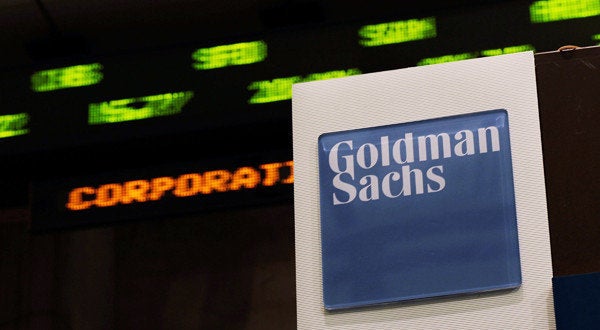
NEW YORK, July 28 (Lauren Tara LaCapra) - More than a dozen traders have quit Goldman Sachs Group Inc's (GS.N) North American government bonds and derivatives trading desk in New York in recent months as the bank takes fewer risks and big bonuses for ambitious traders dry up.
Goldman has been handing out promotions and better pay to its salespeople, rather than the traders who manage the bank's inventory of securities and derivatives, people familiar with the bank's operations said.
The changes reflect Goldman's shift toward client trading and away from making money by betting for its own account, those sources said. Weak trading in general has compounded Goldman's difficulties as it struggles to earn profits from clients without the help of its market bets, analysts said.
It makes sense for Goldman management to reward sales staff over traders these days, said Susquehanna Financial Group analyst David Hilder.
"The client franchise is paramount," said Hilder. "You need sales people to deal with and talk to the clients. Over the long term, that's more important than a few guys trading bonds."
Among the recent departures is Brian Mooney, an interest-rate derivatives trader who spent 22 years at Goldman before joining Bank of America Corp's (BAC.N) Merrill Lynch this week, according to three sources who know about the move.
Mooney's exit follows that of Glenn Hadden, the former head of Goldman's U.S. Treasury bond trading desk, who left last year to run Morgan Stanley's (MS.N) global rates trading group in January.
At least nine other traders from the rates desk have left for jobs at competitors this year, including UBS AG (UBSN.VX), Nomura Holdings Inc (8604.T), Jefferies Group Inc (JEF.N) and JPMorgan Chase & Co (JPM.N), or hedge funds like Stark Investments near Milwaukee. Among their ranks were more junior traders, some of whom were seen as rising stars at Goldman.
Goldman has been laying off traders since March, but there has also been a flood of voluntary exits that began late last year and continued through the second quarter, sources said.
Colin Corgan, a respected partner on the rates desk, retired in late 2010. In March, Craig Reynolds, a former top interest-rate swaps trader at Goldman, left to become head of Bank of America-Merrill Lynch's North American interest-rate trading desk.
Some traders that have left the bank said they fear Goldman may turn into just another investment bank, and they wanted to leave while it was still seen as prestigious on Wall Street.
"Working for Goldman is no longer different than working for anybody else," said one former Goldman trader who left this year. "At the same time, if you have Goldman on your resume, that's still a premium. People are monetizing the Goldman premium now because two years from now you won't be able to."
"Goldman Sachs is totally committed to the interest rate products business," said spokesman Michael DuVally. The bank is staffed appropriately for the business, he added.
SPECTER OF THE VOLCKER RULE
Goldman's North American rates-trading desk handles some of the most actively traded markets in the world, including U.S. Treasury bonds and U.S. dollar interest-rate swaps.
The desk is to some degree shielded from a financial reform provision called the Volcker rule that will prevent banks from gambling on market direction.
The rule is not in effect yet, but even once it is implemented, banks will still be allowed to take proprietary positions in the Treasury market and hedge against risk using related derivatives.
Nonetheless, traders who left Goldman's rates desk complained they were hamstrung by aggressive risk managers who limited position sizes and second-guessed trades. They also said they were being asked to take on more responsibilities with less pay as Goldman tries to cut costs.
In announcing quarterly results last week, Chief Financial Officer David Viniar said Goldman plans to lay off about 1,000 people this year to reduce expenses by $1.2 billion and may slash employee pay if business doesn't pick up.
The rates-trading desk is among the largest in Goldman's enormous fixed income, currency and commodities trading business, known as FICC. Over the last six quarters, FICC trading has suffered as clients pulled back from the market.
Goldman detailed a 53 percent decline in second-quarter FICC revenue last week. Revenue there has dropped by 46 percent, on average, in each of the past four quarters.
Goldman does not break out rates trading numbers, but said revenue there dropped "significantly."
Goldman's client business has gained traction in some rates-trading areas -- for example, the bank boosted market share in U.S. Treasury trading this year to 12.2 percent from 10.7 percent, according to a Greenwich Associates survey.
Yet higher market share does not always amount to better profits, Greenwich said. Narrowing bid-ask spreads, increasing use of electronic trading and competition for big institutional clients' business are pressuring rates-trading profits.
"The market's shift in emphasis from structured products to rates products has already reduced the profitability of fixed income for sell-side firms," said Greenwich Associates consultant Woody Canaday. (Editing by Dan Wilchins and Robert MacMillan)
Copyright 2011 Thomson Reuters. Click for Restrictions.
